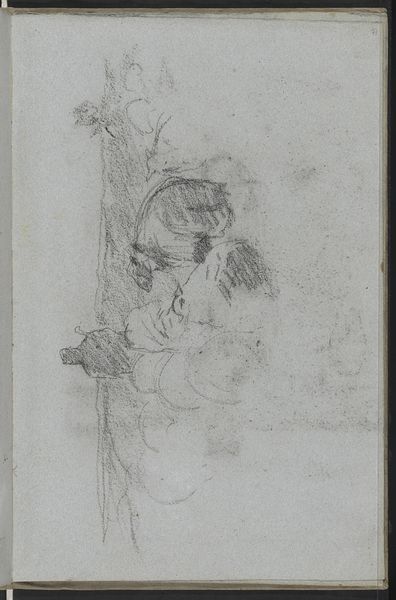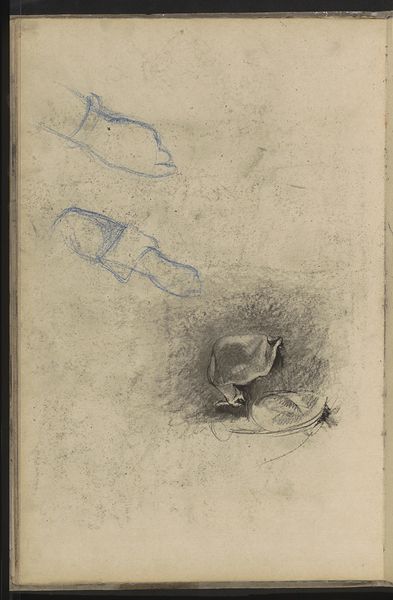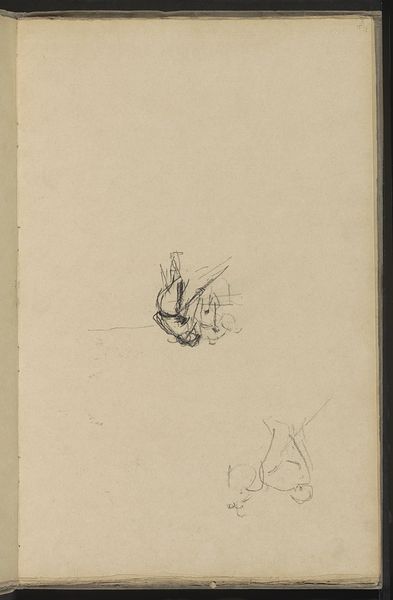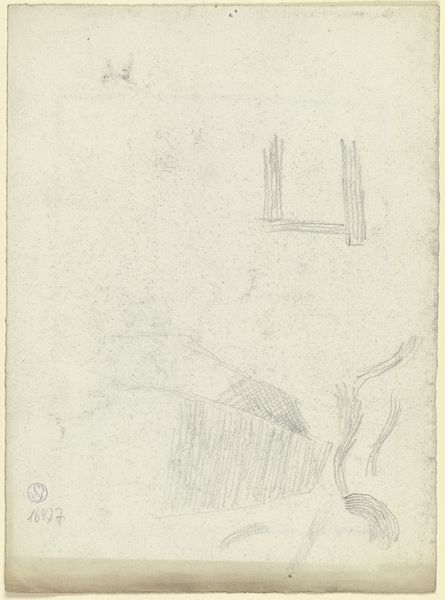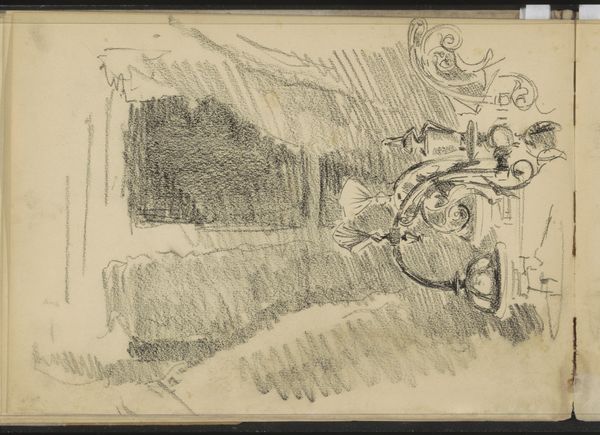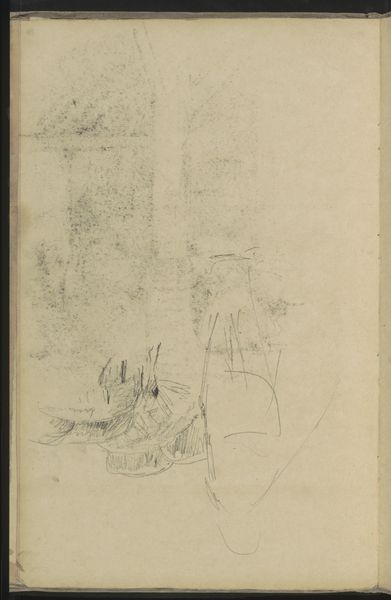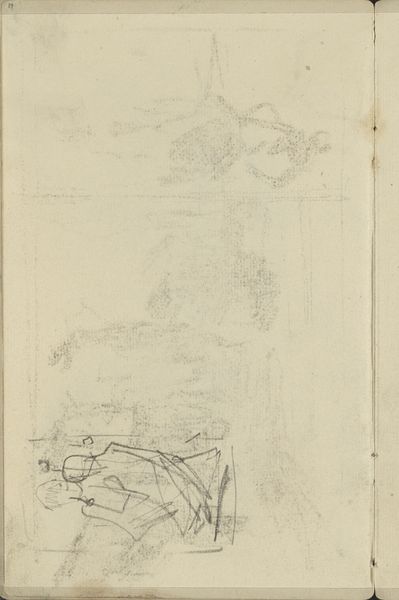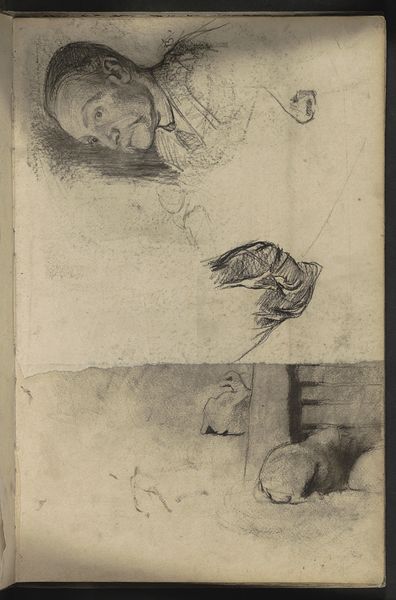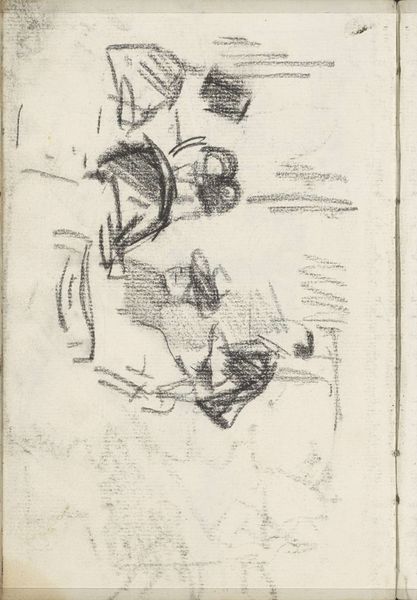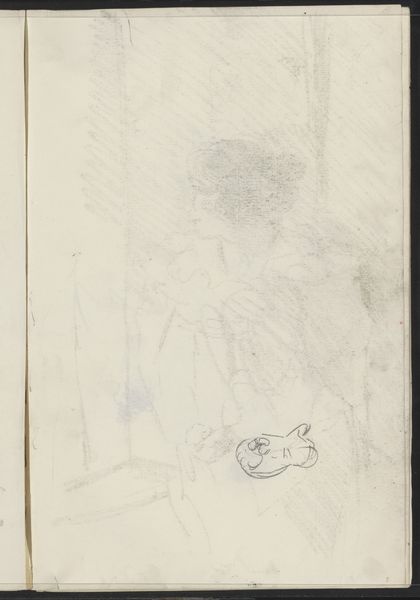
drawing, pencil
#
drawing
#
pencil sketch
#
landscape
#
figuration
#
pencil
Copyright: Rijks Museum: Open Domain
Curator: Here we have Willem Witsen's drawing "Schapen in een landschap en een vrouwenhoofd," executed around 1884-1887, held here at the Rijksmuseum. It's primarily a pencil sketch. Editor: It strikes me as quite ethereal, almost ghostly. The sheep are merely suggested, and the woman's head, a delicate apparition floating amidst the landscape. What was Witsen aiming to capture? Curator: Witsen was deeply involved in the Dutch art scene of the late 19th century. He moved in literary circles, championing progressive political causes. The ambiguity here suggests a challenge to academic art. There are undercurrents reflecting a society in transition. Editor: The political tensions are really palpable when we consider that these are just mere pencil sketches. I find myself pondering on the significance of the obscured features. Is the woman, for instance, veiled in societal expectations or perhaps grief? What does this tell us about the feminine experience in the late 1800s? Curator: The sheep within a rural landscape and the woman could mirror societal values in how gender roles impacted identity, Witsen offers us, with only minimal details, insights into the era that promoted such expectations, by showcasing familiar elements which had high influence. Editor: So we have the intersection of these gender dynamics alongside the landscape. Did the rural setting of this artwork hold any specific political or symbolic meanings for Witsen? Was there anything to do with class divide at the time of art's creation? Curator: It would seem the work may mirror social division. Industrialisation pulled families to cities and Witsen seems to ask: "what is the status of rural life" amid the great societal reorganization? Editor: The artist creates a space of discomfort. I wonder about those left in these dying communities; the elderly or women. I wonder about class divides and the promise and hope Witsen offered by portraying it. Curator: It serves as a valuable visual text offering critical understanding into those left in the community, an example of Witsen's social criticism. Editor: These ephemeral characters offer up such fascinating details; their place within history provides valuable information that helps give the ghostly drawings an impactful voice in socio-economic, as well as, gender criticism.
Comments
No comments
Be the first to comment and join the conversation on the ultimate creative platform.

